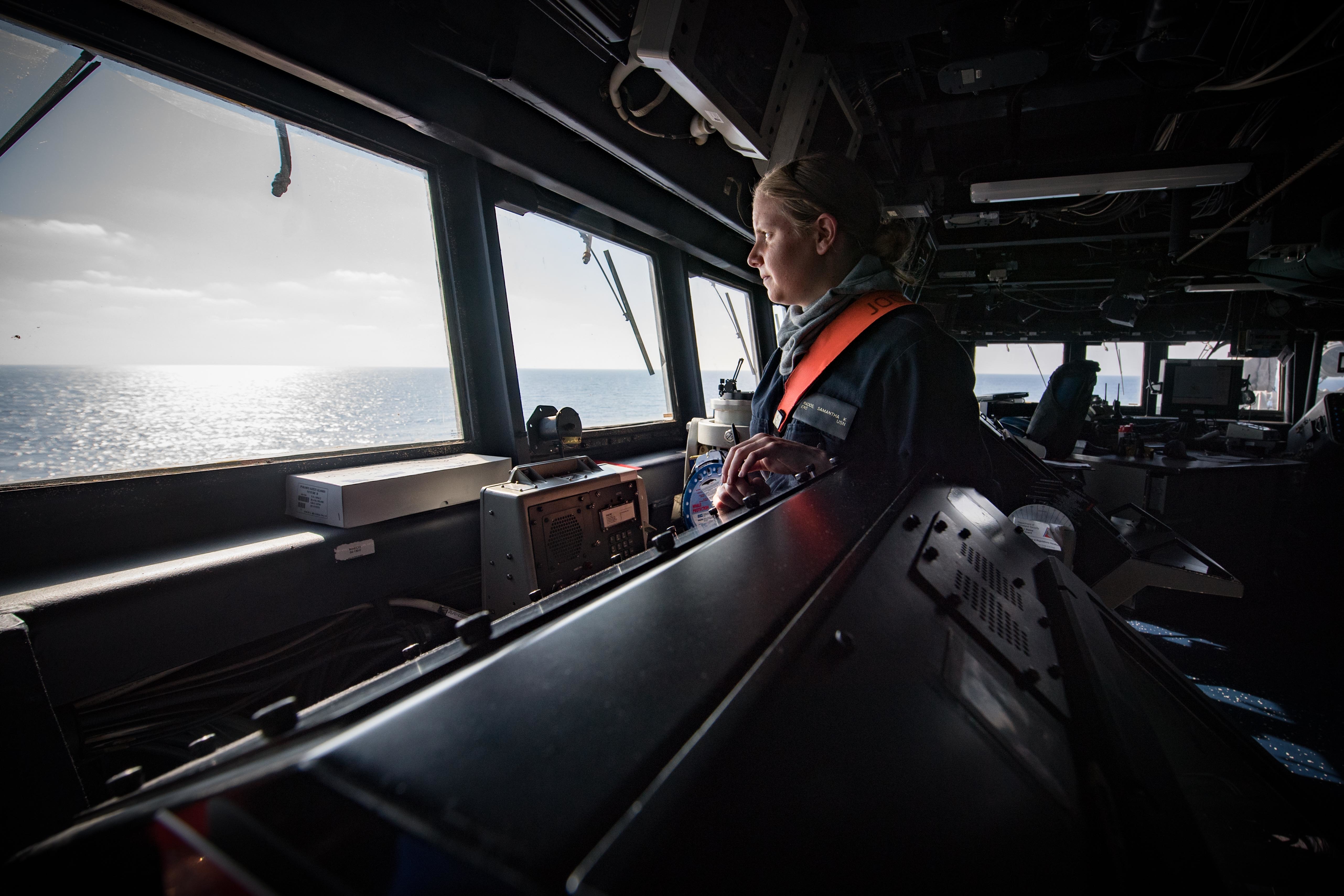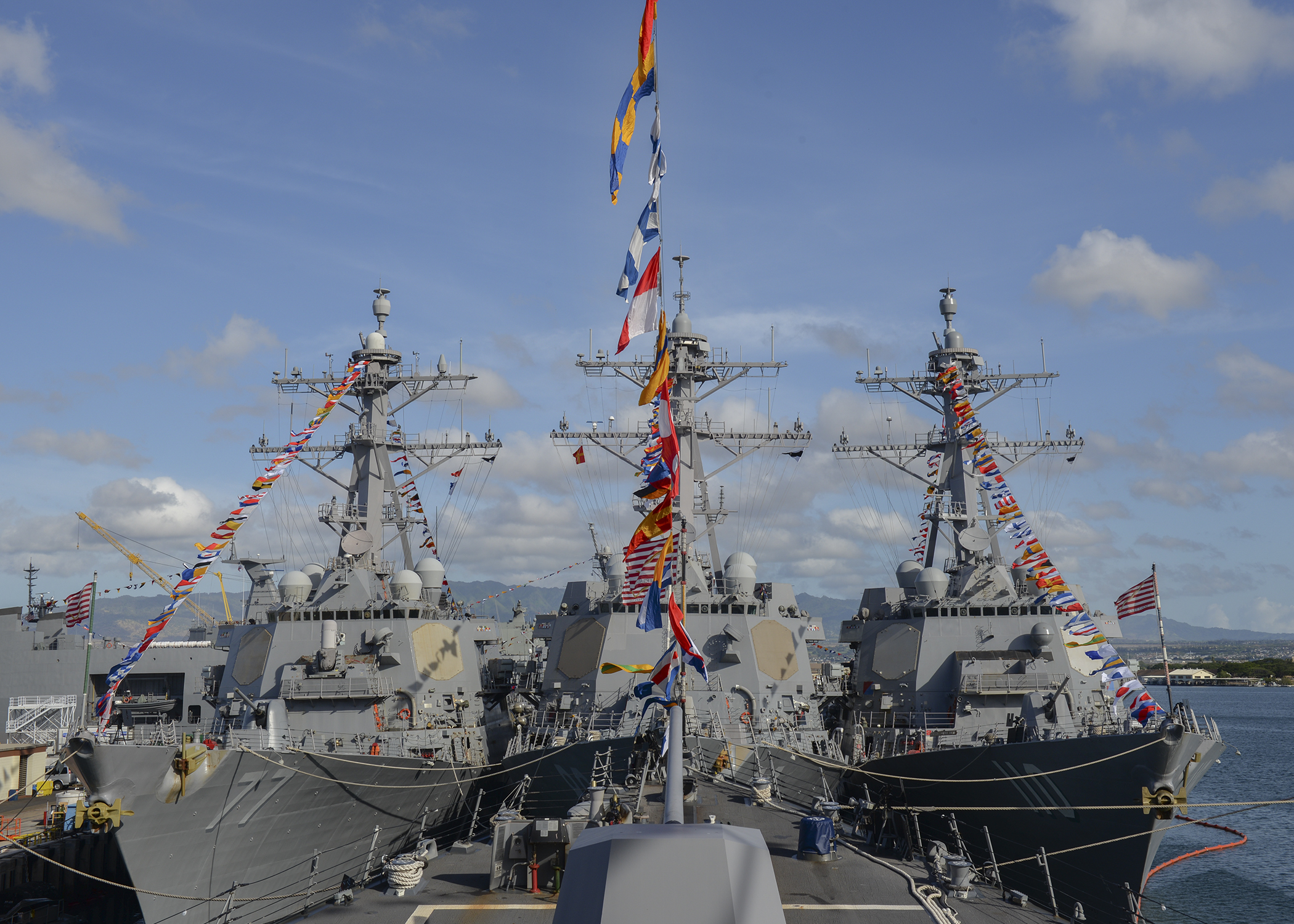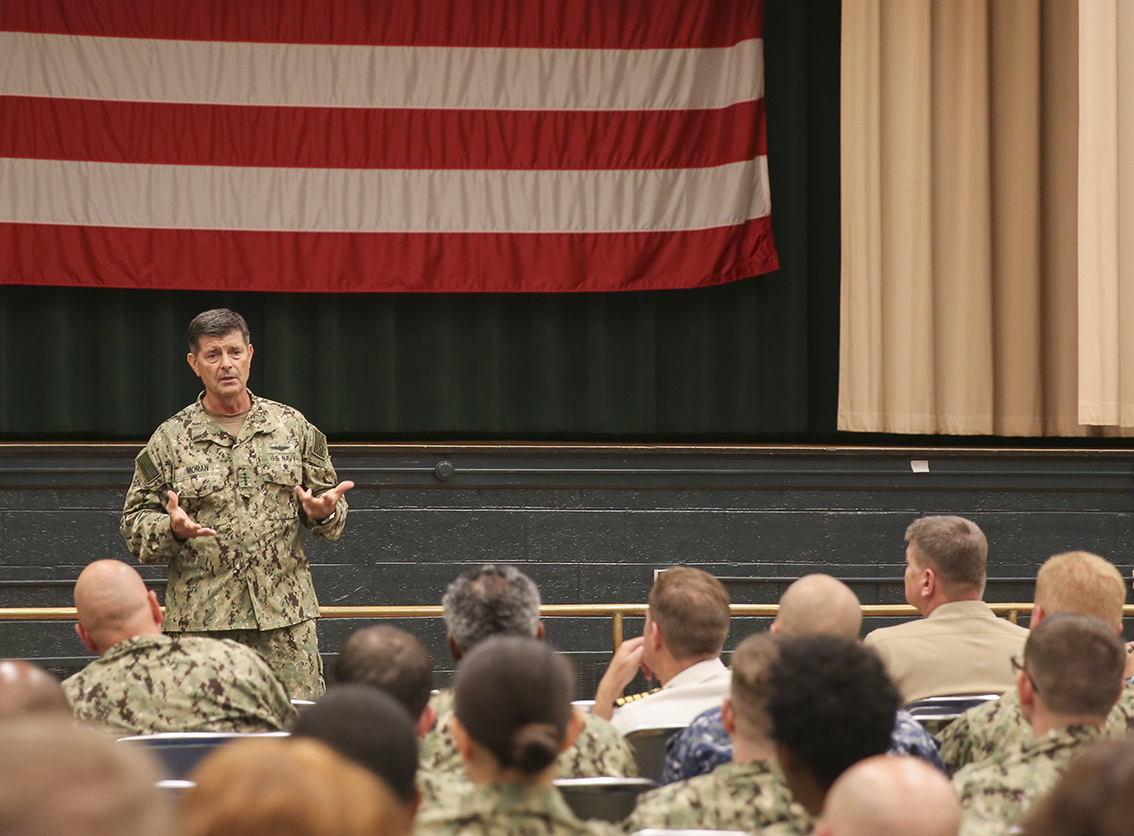
NAVAL STATION NORFOLK – The Navy is asking Congress for a $64-million adjustment in its budget to begin work on a series of reforms to the surface force following the fatal collisions of two warships in 2017, Vice Chief of Naval Operations Adm. Bill Moran confirmed to USNI News on Monday.
Two separate reviews following the deaths of 17 sailors from the collisions of USS Fitzgerald (DDG-62) and USS John S. McCain (DDG-56) identified 111 areas the surface navy needed to tackle to shore up readiness and safety standards, Moran told sailors during an all-hands call in Norfolk.
The new ask — part of the Pentagon’s reprogramming request for the fiscal year 2018 budget – gets after the first tranche of fixes the Navy identified in the reports.
The request includes money for new maritime training schoolhouses on the East and West coasts, money for Automatic Identification System laptops, development money for a next-generation surface search radar and the money to reestablish U.S. 2nd Fleet in Norfolk, Va., according to a copy of the plan obtained by USNI News last week.
Moran described the requests as “the highest priority items that we need and that we could do in Fiscal Year ’18. Get that money under contract and start the process.”
The first set of items the Navy will pursue center on basic mariner instruction efforts and improvements in navigation and ship handling that were central to the McCain and Fitzgerald collisions.

Surface Reform Items in the Pentagon Reprogramming Request:
- $16.2 million for additional enlisted pay and benefits to help improve afloat unit manning and training.
- $1.3 million for Naval Surface Forces Atlantic to update Automatic Identification System laptops.
- $1.8 million for a Naval Sea Systems Command ship control system design review.
- $2.3 million to reestablish U.S. 2nd Fleet.
- $4 million for improvements in budget and accounting process.
- $22.6 million to establish the Mariner Skills Training Program (MSTP) at Newport, RI, Norfolk. Va. and San Diego, Calif.
- $0.3 million to expand the use of U.S. Naval Academy Yard Patrol (YP) craft for NROTC midshipmen in FY 2018.
- $7.18 million for consultant services to “execute a forward-looking learning culture” in the service and a modernizes the Navy’s Manpower Requirement System.
- $8.5 million to accelerate fielding of the Next Generation Surface Search Radar.
The largest chunk, $22.6 million, is requested to kick off a mariner skills training programs in San Diego, Calif.; Norfolk; and Newport, R.I.; to be overseen by the Surface Warfare Officers School. The money will cover the construction of two new schoolhouses and the curriculum that’s being piloted now.
“The simulation environment at Newport is going to grow. The simulated environment on the waterfront in Norfolk and San Diego is going to grow, so we’ve programmed money in there and are waiting for Congress to release those monies so that we can get them under contract and get them kicked off,” Moran said.
If Congress approves the shift in funds, the SWOS mariners skills program could start as early as May.

“SWOS is ready to go, we just need to get the money approved,” Moran said.
When asked by USNI News last week, Navy officials in the Pentagon said more readiness funding line items were being developed for next year’s fiscal year 2020 budget rollout.
“Additional funding in support of readiness reform recommendations will be programmed across the [future years defense plan],” Lt. Lauren Chatmas told USNI News in a written statement.
“Once the FY 20 budget is rolled out, we will be able to discuss in further detail any additional funding requirements in support of readiness reform.”
As for 2019, the Senate and House armed services committees included additional surface reform measures in the conference report of their defense authorization bill, released on Monday night. That work included key provisions of the Sen. John McCain (R-Ariz.) and Sen. Roger Wicker (R-Miss.)-sponsored Surface Warfare Enhancement Act of 2018. House provisions included in the conference bill include creating clear chains of command for overseas ships, limits on how long a ship can be deployed overseas, and directing the Government Accountability Office to study if the Navy should create separate career paths for navigators and engineering officers on ships.





